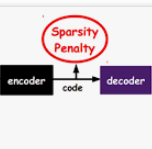Point-of-Care Ultrasound (POCUS) refers to clinician-performed and interpreted ultrasonography at the patient's bedside. Interpreting these images requires a high level of expertise, which may not be available during emergencies. In this paper, we support POCUS by developing classifiers that can aid medical professionals by diagnosing whether or not a patient has pneumothorax. We decomposed the task into multiple steps, using YOLOv4 to extract relevant regions of the video and a 3D sparse coding model to represent video features. Given the difficulty in acquiring positive training videos, we trained a small-data classifier with a maximum of 15 positive and 32 negative examples. To counteract this limitation, we leveraged subject matter expert (SME) knowledge to limit the hypothesis space, thus reducing the cost of data collection. We present results using two lung ultrasound datasets and demonstrate that our model is capable of achieving performance on par with SMEs in pneumothorax identification. We then developed an iOS application that runs our full system in less than 4 seconds on an iPad Pro, and less than 8 seconds on an iPhone 13 Pro, labeling key regions in the lung sonogram to provide interpretable diagnoses.
翻译:护理点超声波(POCUS)是指病人床边的临床性表现和解释超声波仪(POCUS),解释这些图像需要高水平的专门知识,在紧急情况下可能无法提供。在本文件中,我们支持POCUS,通过发展分类师,通过诊断病人是否有肺炎球菌来帮助医疗专业人员。我们用YOLOv4将任务分成多个步骤,利用YOLOv4来提取有关区域的视频和3D稀释编码模型来代表视频特征。由于难以获得积极的培训录像,我们培训了一个小数据分类器,最多有15个正数和32个负数的例子。为了抵消这一限制,我们利用主题专家的知识来限制假设空间,从而降低数据收集的成本。我们用两个肺超声数据集来介绍结果,并证明我们的模型能够实现与中小企业在肺炎球素识别方面的相同性能。我们随后开发了一个iOS应用软件,在IPad Prophasimalision 13号的关键分辨率解算区域不到4秒钟,提供IPOS全系统。




